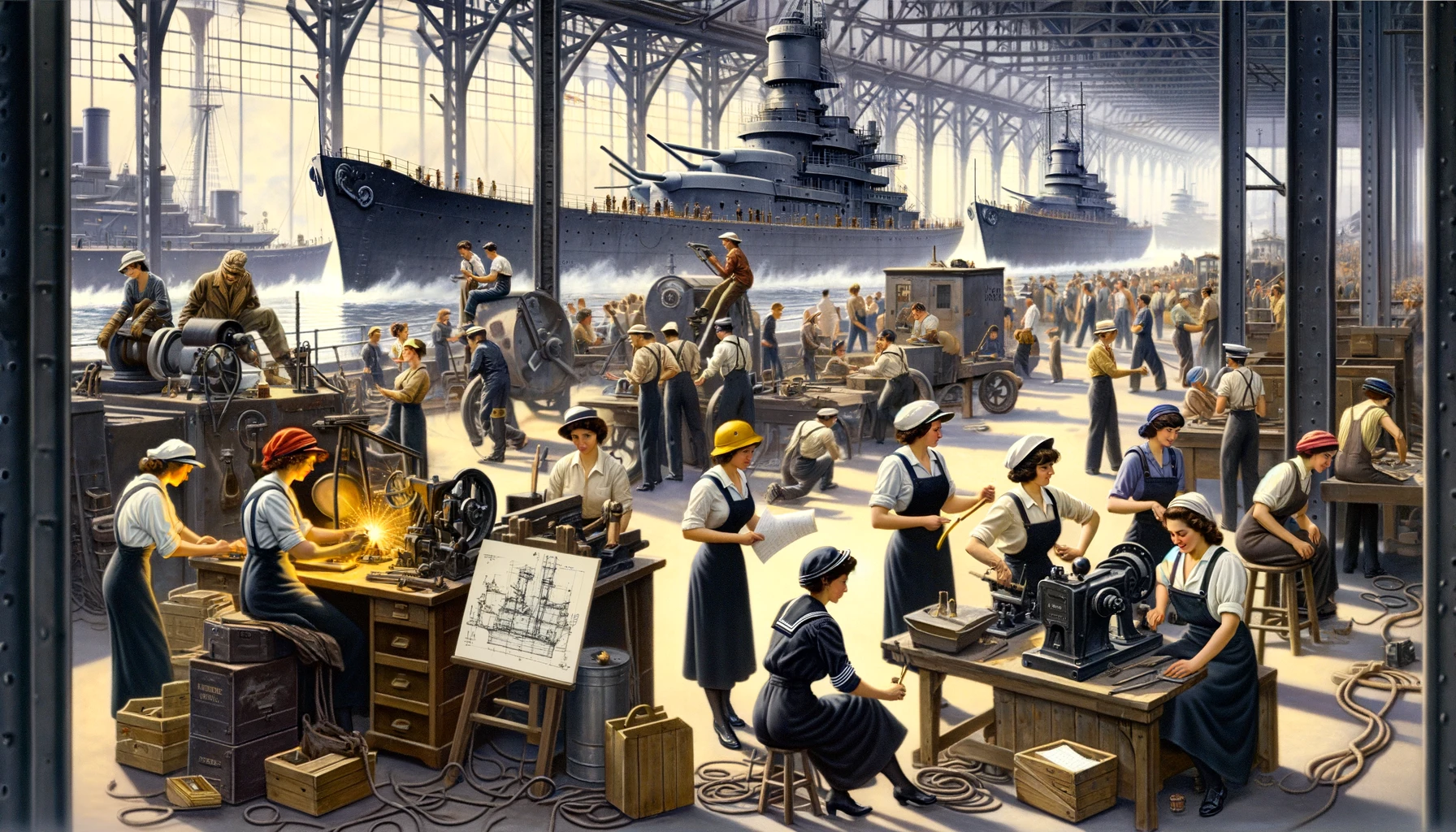Located along the Anacostia River in southeast Washington D.C., the Washington Navy Yard has been a cornerstone of America’s naval power since its establishment in 1799. From producing cannons for the young nation to manufacturing cutting-edge technology, the Yard played a vital role in the nation’s defense. Throughout its history, it has witnessed significant social and technological transformations, with women’s wartime contributions during World War II being a particularly remarkable chapter.
From Clerical Roles to the Factory Floor
Historically, women’s presence in the Washington Navy Yard was limited to predominantly clerical and administrative positions. The outbreak of World War II, however, ushered in a period of dramatic change. The nation’s desperate need for skilled workers to accelerate war production efforts led to an unprecedented influx of women into the industrial workforce. The Washington Navy Yard, the country’s largest naval ordnance facility, was no exception.
The iconic “Rosie the Riveter” campaign propelled women into traditionally male-dominated fields, and the Navy Yard reflected this nationwide trend. Women began breaking down barriers as they traded their typewriters and filing cabinets for welding torches, blueprints, and heavy machinery. They stepped out of their accustomed roles and into a world of grease, grime, and physically demanding labor.
The Voices of Change
The personal accounts of these women offer a glimpse into their experiences, sacrifices, and triumphs. Juanita Gray, an African American woman from Richmond, Virginia, was among the many who traveled to Washington D.C. in search of better opportunities. In a 1978 interview with the Smithsonian Institution, Gray recalled her determination to make a difference: “I didn’t know what I would do, but I knew I wouldn’t be cleaning or doing housework for someone. I wanted something better than that.”
Initially hired as a laborer, Gray quickly transitioned into skilled work. She became a pipefitter, contributing to the construction and repair of naval vessels. The work was not without its challenges, both physical and societal. “Some of the men didn’t like the women, and some of the women didn’t like the men,” she remarked, highlighting the tensions that often accompanied the rapid social changes of the time.
The Navy Yard’s female workforce, however, was not a monolith. Women came from diverse backgrounds and experiences. Mary Windsor, a white woman from North Carolina, joined the war effort out of a sense of duty and financial necessity. She described learning how to operate a lathe, a complex machine tool, for the production of shell casings. The work was meticulous and demanded precision. “You had to be sure it was the right size,” she recounted in an interview. “If it wasn’t, the guns would jam.”
Overcoming Obstacles
Breaking into a male-dominated industry was riddled with obstacles. Many women encountered skepticism about their abilities. Others faced blatant discrimination based on their gender or race. The physical demands of the work also posed challenges, with many women enduring long hours in hot and noisy conditions.
The Washington Navy Yard also saw African American women stepping into new roles. Facing the double burden of racial and gender discrimination, they were initially relegated to the most menial and dangerous jobs. Organizations like the National Youth Administration (NYA) provided training opportunities, allowing some women to move into semi-skilled and even skilled positions.
The Wider Impact and Lasting Legacy
The contributions of women in the Washington Navy Yard extended far beyond the production of ships and weaponry. Their very presence challenged traditional gender roles and paved the way for future generations. They proved beyond doubt that women were just as capable as men when it came to industrial work – their skills and dedication were essential to the war effort.


Leave a Reply